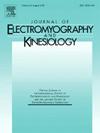An articulated ankle foot orthosis with plantarflexion resistance decreased soleus and tibialis anterior muscle activity, and plantarflexion moment of the paretic lower limb of persons with stroke
IF 2.3
4区 医学
Q3 NEUROSCIENCES
引用次数: 0
Abstract
Ankle foot orthoses (AFOs) are important devices for assisting persons with stroke during walking, especially in mediating dorsiflexor weakness. The plantarflexion (PF) resistances of AFOs have been shown to augment dorsiflexor muscle function during the stance and swing phases of gait. However, it is not clear how this translates to the muscle activities of their paretic lower limbs. To further explore this question in stroke rehabilitation, 3D technology was used in designing and fabricating an individual-specific articulated AFO, which we assembled with a mechanical joint that enabled the application of PF resistances. We investigated the impact of regulating two PF resistances (PF1, PF2) on their paretic lower limb muscle activity. At PF2, there was significantly lower mean muscle activity for the Soleus in LR and the Tibialis anterior in the second rocker, pre-swing, and swing phases. The device only impacted the activity of the medial gastrocnemius muscle at the second rocker. The findings corroborated evidence regarding how AFOs with PF resistance impact the muscle activity of stroke survivors following a single session use; however, longitudinal studies are necessary to establish the impacts with long-term use, as most stroke survivors use AFOs long-term.
关节踝关节足矫形器,抗跖屈,降低比目鱼肌和胫骨前肌活动,减少中风患者下肢的跖屈力矩
踝关节足矫形器(AFOs)是辅助中风患者行走的重要装置,特别是在调节背屈肌无力方面。afo的跖屈(PF)阻力已被证明可以增强站立和摇摆步态阶段的背屈肌功能。然而,目前尚不清楚这如何转化为他们的下肢肌肉活动。为了在中风康复中进一步探索这一问题,我们使用3D技术设计和制造了一个个人特定的铰接式AFO,我们将其与一个能够应用PF阻力的机械关节组装在一起。我们研究了调节两种PF阻力(PF1, PF2)对其麻痹性下肢肌肉活动的影响。在PF2时,LR阶段的比目鱼肌和第二摇臂阶段、摇摆前阶段和摇摆阶段的胫骨前肌的平均肌肉活动显著降低。该装置仅影响第二摇杆处内侧腓肠肌的活动。研究结果证实了在单次使用后,具有PF阻力的afo如何影响中风幸存者的肌肉活动;然而,纵向研究是必要的,以确定长期使用的影响,因为大多数中风幸存者长期使用afo。
本文章由计算机程序翻译,如有差异,请以英文原文为准。
求助全文
约1分钟内获得全文
求助全文
来源期刊
CiteScore
4.70
自引率
8.00%
发文量
70
审稿时长
74 days
期刊介绍:
Journal of Electromyography & Kinesiology is the primary source for outstanding original articles on the study of human movement from muscle contraction via its motor units and sensory system to integrated motion through mechanical and electrical detection techniques.
As the official publication of the International Society of Electrophysiology and Kinesiology, the journal is dedicated to publishing the best work in all areas of electromyography and kinesiology, including: control of movement, muscle fatigue, muscle and nerve properties, joint biomechanics and electrical stimulation. Applications in rehabilitation, sports & exercise, motion analysis, ergonomics, alternative & complimentary medicine, measures of human performance and technical articles on electromyographic signal processing are welcome.

 求助内容:
求助内容: 应助结果提醒方式:
应助结果提醒方式:


